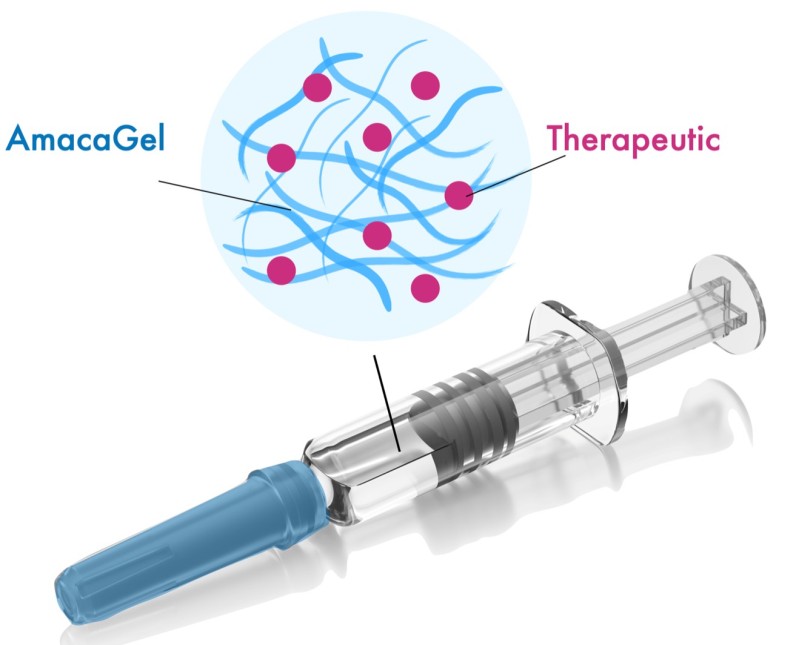
Physicians and investors alike are looking for alternative approaches to conventional post-operative pain management—and the B2B biotech startup AmacaThera may have the answer. Headquartered in Toronto, with an office in South San Francisco, the company is strategically positioned within a major biotech hub.
AmacaThera has designed a long-acting injectable hydrogel platform for localized drug delivery of therapeutic doses. With USD 12 million, the new tech has just completed Phase 1 of its clinical trials. Now, AmacaThera's Phase 2 may prove an exciting investment opportunity for those ready to invest in developing practical solutions to the opioid crisis.
The Scope of the Problem; the Simplicity of the Solution
Data from the Centers for Disease Control (CDC) reveals that 224 people die in the U.S. each day (on average) from an opioid overdose. Findings from the Organization for Economic Cooperation and Development (OECD) reveal that in Canada, the number is about 22 each day—or one death every 65 minutes, double the nation's daily fatality from COVID-19 during the pandemic's most severe period. While there is a wide gap between 224 and 22, Canada nevertheless has the second-highest mortality from opioid overdoses in the world.
That puts some numbers behind the scope of the opioid epidemic. It's why finding alternative approaches to post-op pain management has become so important to governments, nonprofits, and the private sector. Promising solutions present high-potential investment opportunities and a real chance to make a humanitarian difference.
The Story Behind AmacaThera
AmacaThera was founded by two researchers, Dr. Mike Cooke and Dr. Molly Shoichet. Dr. Shoichet is a professor in the Department of Chemical Engineering and Applied Chemistry at the University of Toronto.
Dr. Cooke, after finishing his Ph.D. in stem cell biology from the University of Durham in the U.K., pursued his postdoc research in Dr. Shoichet's lab, where he experimented with using a hydrogel in combination with neural stem cells to repair brain damage in mice that had suffered strokes. His research demonstrated that hydrogel-enhanced stem cells could prompt recovery in stroke-affected brains and restore function in mice.
Dr. Cooke realized that the hydrogel method could be used for safer drug delivery in many therapeutic cases—not only to deliver stem cells but also to deliver a sustained aesthetic or a pain reducer. To adapt his research to real-world practice, Dr. Cooke partnered with Dr. Shoichet in 2016 to create AmacaThera, with Dr. Shoichet as Chief Scientific Officer and Dr. Cooke as CEO.
How AmacaThera's Hydrogel Works
The company's proprietary "AmacaGel," made from a blend of hyaluronic acid and methyl cellulose, acts as a slow-release carrier for the drug that needs to be injected into a surgical site. The gel can be injected without any changes to the surgical procedure.
Once in the body, the gel's consistency releases the drug gradually. In this way, a pain reliever injected into a patient during the procedure can continue to have an effect over a long period. This lets the patient experience pain relief during the critical post-op period without needing to pop pills or risk addiction and overdose.
Unlike other development alternatives, AmacaGel is long-acting, easy to use, and has a very low manufacturing cost. With many possible applications—not just in pain management and veterinary sciences but also potentially in oncology—AmacaThera is looking for more life sciences VCs interested in partnering to bring this flexible biomaterial to the market.







Join the Conversation